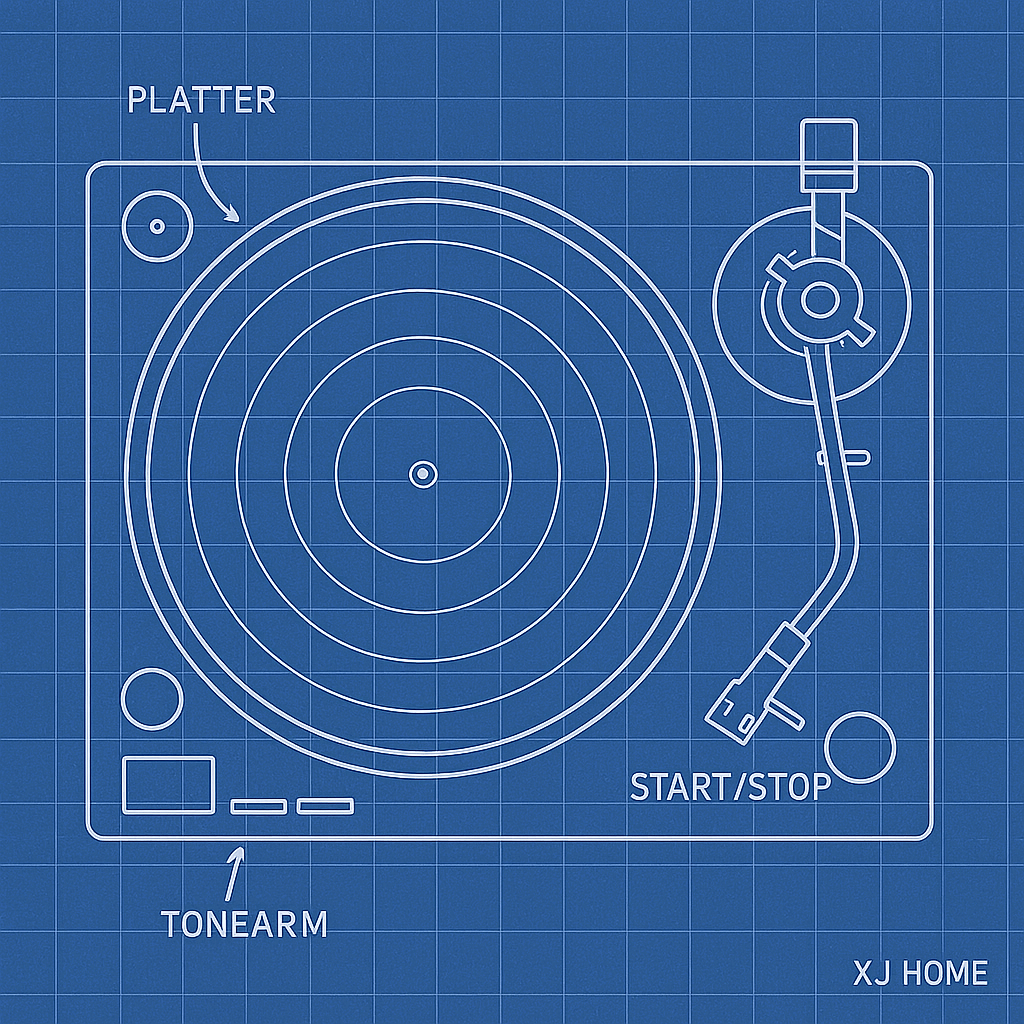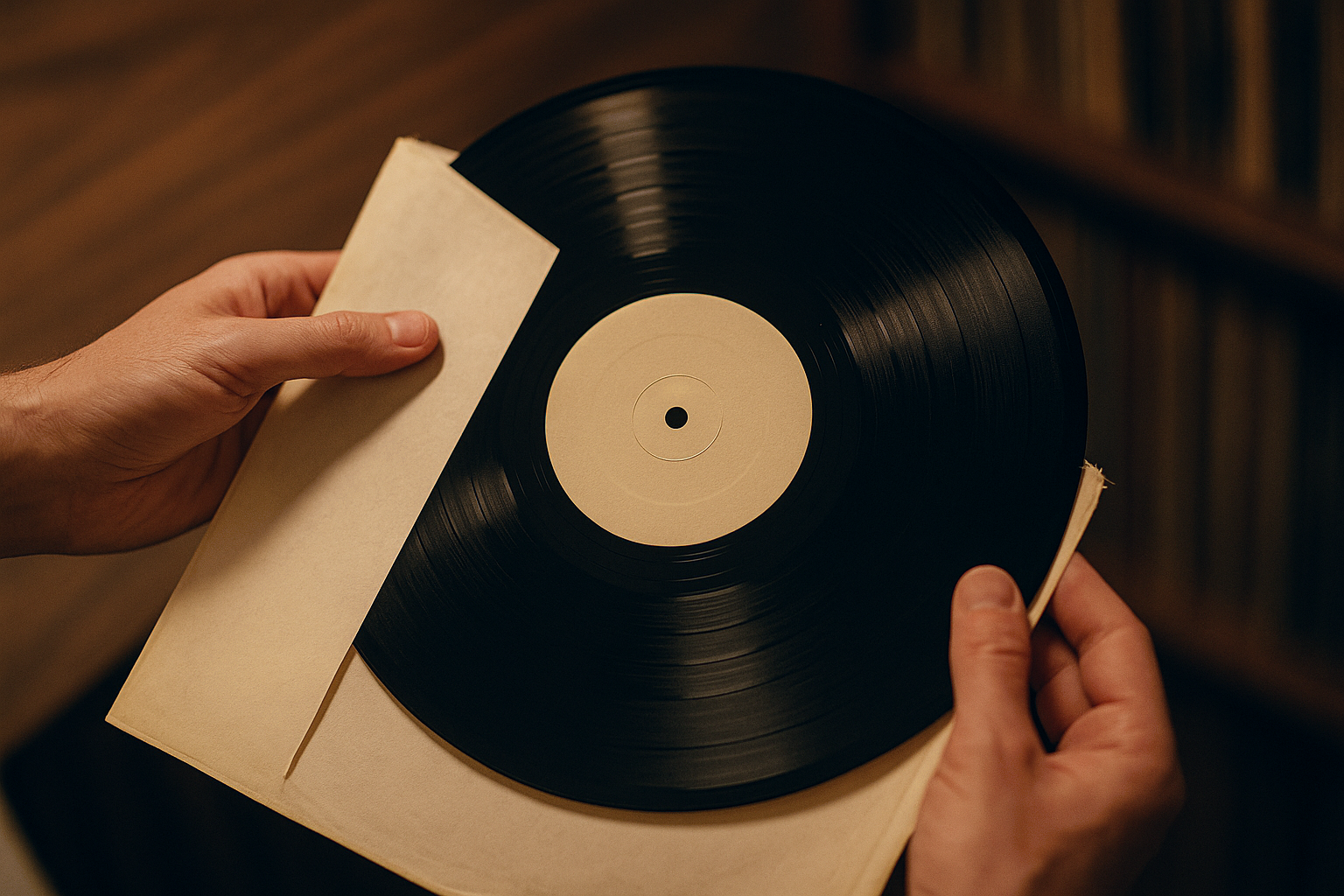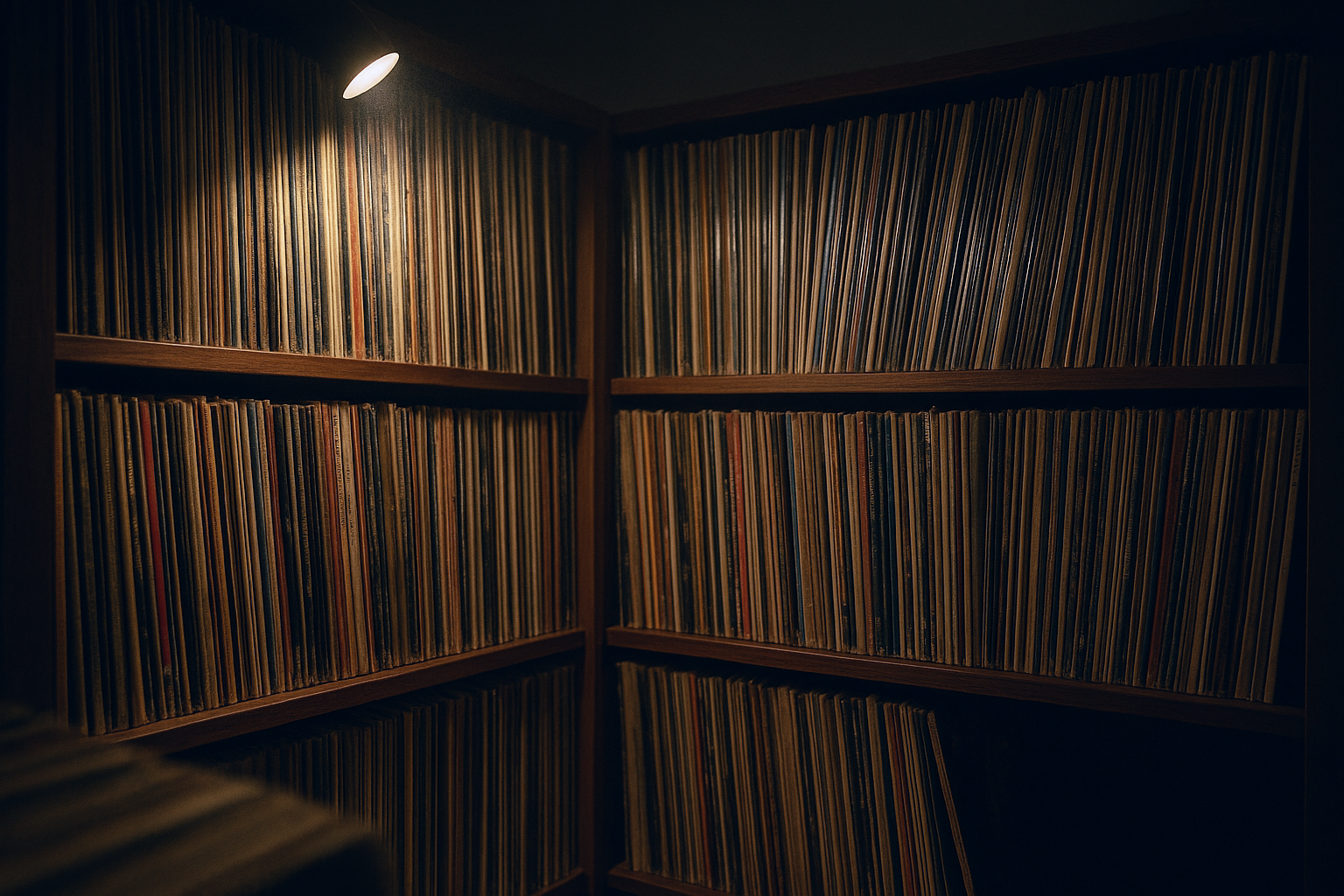There's a unique heartbreak that comes with pulling a beloved record from its sleeve, only to find it's developed an unwelcome undulation – the dreaded warp. It’s a physical manifestation of neglect, a testament to the often-underestimated forces that can conspire against our cherished vinyl. Many offer simplistic advice: "store them upright." While true, that’s merely scratching the surface of a science that, if ignored, can lead to irreversible damage.
At XJ-HOME, we believe that true stewardship of a vinyl collection extends beyond just playing records; it encompasses their meticulous preservation. This isn't just about avoiding the obvious; it's about understanding the environmental and physical pressures that can turn your flat, pristine discs into wobbly disappointments. Let's delve into the art and science of vinyl storage, aiming for a level of understanding that ensures your collection remains a source of joy, not frustration.
The Enemy Within (and Without): Understanding What Causes Warping
Vinyl (Polyvinyl Chloride or PVC) is a thermoplastic. This means it softens when heated and hardens when cooled. This characteristic is key to how records are pressed, but it's also their Achilles' heel when it comes to storage.
The primary culprits of warping are:
-
Heat: This is Public Enemy No. 1.
-
Direct Sunlight: Even short exposure can be catastrophic. Sunlight streaming through a window can quickly heat records, especially dark vinyl, to temperatures that allow them to soften and deform under their own weight or external pressure.
-
Proximity to Heat Sources: Storing records near radiators, heating vents, amplifiers (especially tube amps), or any heat-generating appliance is asking for trouble. Attics and garages, with their extreme temperature fluctuations, are notoriously bad environments.
-
Ambient Temperature: Consistently high ambient temperatures, even without direct heat sources, can contribute to long-term warping, especially if other adverse storage conditions are present.
-
-
Uneven Pressure & Incorrect Orientation: This is where common storage mistakes often occur.
-
Horizontal Stacking (The Cardinal Sin): Stacking records flat on top of each other, especially in large numbers, creates immense pressure on the records at the bottom. The weight, combined with even slight temperature variations, can cause them to sag and warp over time. Each record becomes a tiny, uneven weight on the one below it.
-
Leaning at an Angle: Storing records at a significant lean for extended periods puts uneven pressure on the discs, encouraging them to bend. This is especially true if the lean is unsupported.
-
Over-Tight Packing: Cramming too many records into a shelf or box can create side pressure, which, combined with other factors, can lead to "dishing" or other forms of warping. Records need a little breathing room.
-
-
Humidity (Indirectly): While not a direct cause of PVC warping, high humidity can damage record sleeves and inner liners, making them damp. This can lead to mold growth (another vinyl nightmare) and can cause sleeves to stick to records or contribute to uneven pressure if the packaging swells or deforms.
The Pillars of Proper Vinyl Storage: Your Defense Against the Warp
Preventing warping isn't about complex rituals; it's about adhering to a few fundamental principles consistently.
1. Vertical, Vertical, Vertical!
* This is the golden rule. Records should always be stored perfectly upright, like books on a shelf. This distributes their weight evenly along their strongest axis (the edge) and minimizes stress on the playing surfaces.
* Support is Key: Ensure they are supported by sturdy, flat dividers or by being packed snugly (but not too tightly!) together. You don't want them leaning significantly.
2. The "Not Too Tight, Not Too Loose" Principle:
* Avoid Overcrowding: Don't jam records onto shelves. This makes them difficult to remove (risking sleeve damage) and can create lateral pressure. You should be able to easily flip through them.
* Avoid Excessive Gaps: Conversely, if you only have a few records on a wide shelf, use sturdy bookends or dedicated record dividers to keep them upright and prevent them from leaning. A record leaning at a 45-degree angle is under stress.
3. Temperature Control – The Cool Zone:
* Aim for Stability: A cool, dry, and stable environment is ideal. Room temperature (around 65-75°F or 18-24°C) is generally fine. More important than the exact temperature is avoiding drastic fluctuations.
* Out of Direct Sunlight: This cannot be stressed enough. Keep records far away from windows where direct sunlight can reach them, even for short periods. UV rays can also damage artwork.
* Away from Heat Sources: Maintain a safe distance from radiators, vents, electronics that run hot, etc.
4. Choosing Your Storage Furniture Wisely:
* Dedicated Record Shelving: The IKEA KALLAX (formerly EXPEDIT) series is a popular and affordable choice for a reason: its cubbies are well-sized for 12-inch LPs and provide good vertical support. Many other purpose-built record storage units exist.
* Sturdy Bookshelves: If using regular bookshelves, ensure they are strong enough to handle the considerable weight of vinyl records (records are heavy!). The shelves should not sag.
* Materials Matter: Wood is generally good. Avoid storing records directly on concrete floors in basements if dampness is a concern.
* Cabinet Doors (Pros & Cons): Cabinets with doors can offer protection from dust and light but ensure there's adequate ventilation to prevent heat and humidity buildup inside.
5. Protective Sleeves – The First Line of Defense:
* Outer Sleeves: Use archival-quality polypropylene or polyethylene outer sleeves to protect the album artwork from dust, shelf wear, and minor moisture. This also makes them easier to slide in and out of storage. This commitment to protecting the entire package is something we appreciate at XJ-HOME, where the presentation and care of quality items are paramount. You can find excellent guidance on choosing sleeves from resources like the Library of Congress's recommendations for sound recording preservation, which often touch upon suitable materials.
* Inner Sleeves: Replace rough paper inner sleeves with anti-static, archival-quality sleeves (e.g., MoFi Original Master Sleeves or similar). This protects the vinyl surface itself from scratches and static buildup.
6. Handling with Care:
* Always handle records by their edges and label areas. Avoid touching the playing surfaces.
* When removing a record from a shelf, pull it out straight rather than at an angle that might bend the sleeve or disc.
The "Oh No, It's Already Warped!" Scenario
What if, despite your best efforts (or before you knew better), you have a warped record?
-
Minor Warps: Sometimes, a very slight warp might still be playable, especially with a good turntable and tonearm that can track well. However, it's not ideal.
-
Record Flatteners: Devices like the Vinyl Flat Record Flattener or the ORB DF-01iA+ exist, which use controlled heat and pressure to attempt to flatten warped records. These can be effective but are an investment and require careful use to avoid further damage. They are generally a last resort.
-
The "Heavy Books" Myth (Proceed with Extreme Caution): Some old-timers swear by placing a warped record between two heavy, flat objects (like large books) for an extended period. This is risky. Too much pressure, uneven surfaces, or slight heat can make things worse or damage the grooves. If you try this, it's at your own risk and should be done in a cool environment with perfectly flat surfaces.
Long-Term Love: The Collector's Commitment
Properly storing your vinyl records is an ongoing commitment, not a one-time setup. Regularly check your storage conditions, especially if your environment changes (e.g., moving, seasonal weather shifts).
By understanding the forces at play and implementing these storage strategies, you're not just preventing warping; you're ensuring that the music, memories, and monetary value encapsulated in your vinyl collection endure for years, even decades, to come. It’s an act of preservation that allows the unique magic of analog to be passed on and enjoyed.
How do you store your vinyl treasures? Share your best tips or hard-learned lessons in the comments below!





Leave a comment
All comments are moderated before being published.
This site is protected by hCaptcha and the hCaptcha Privacy Policy and Terms of Service apply.